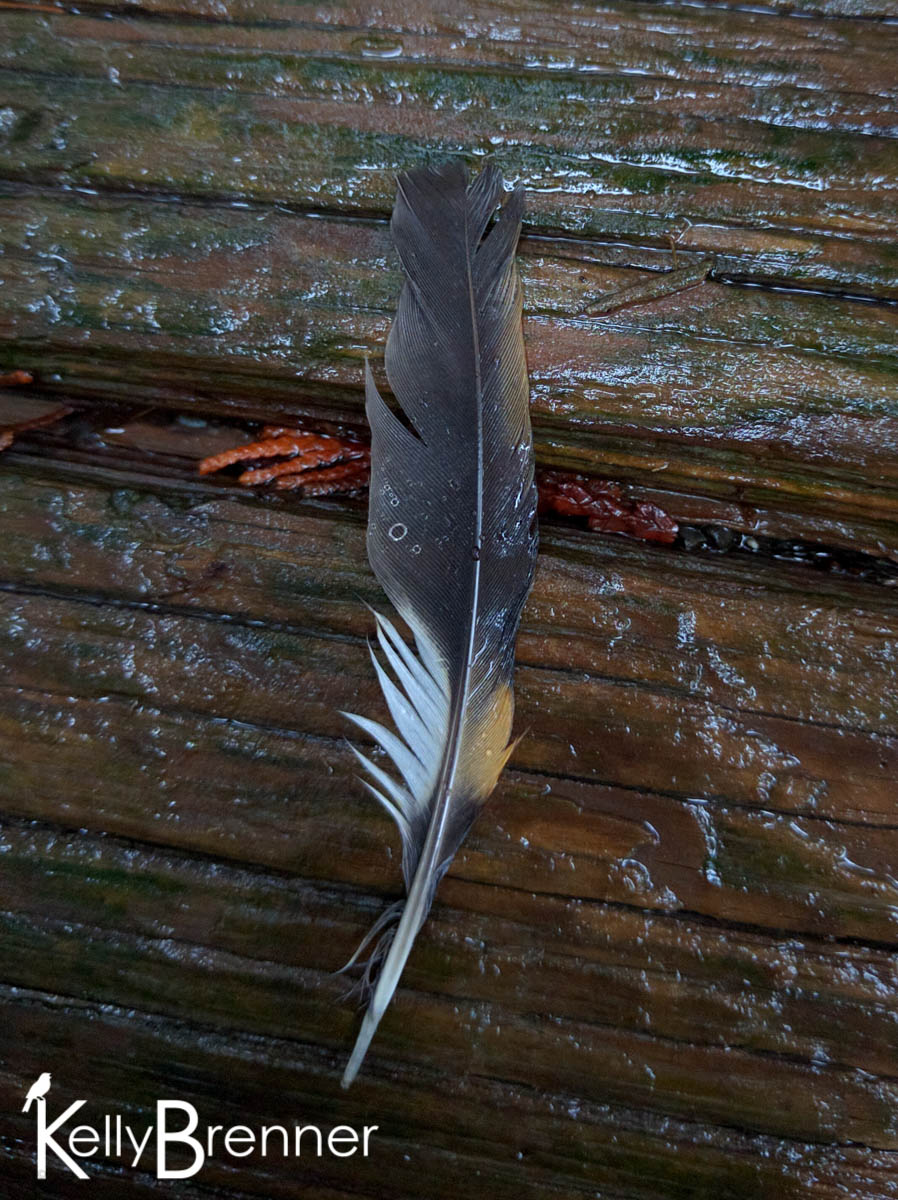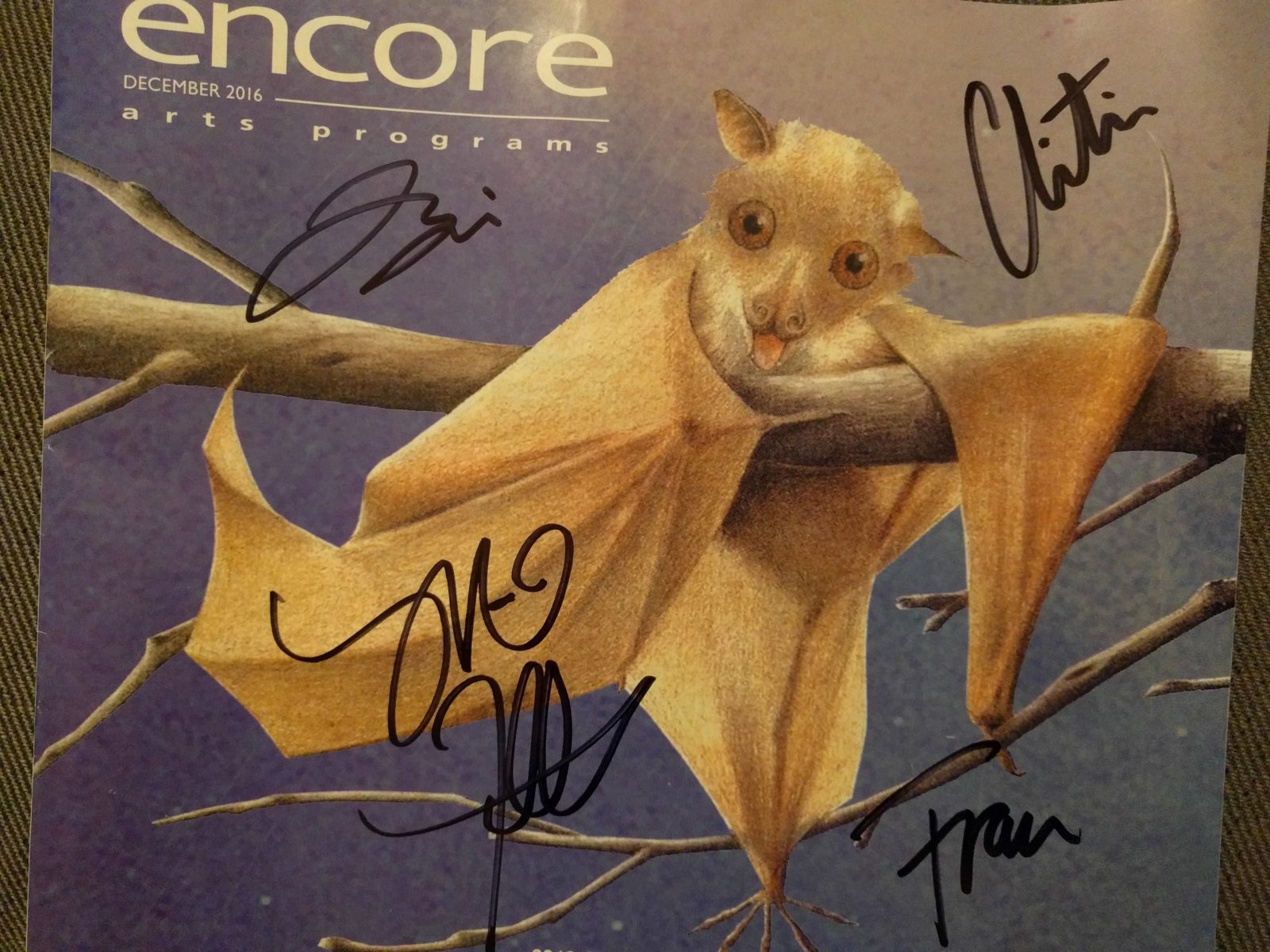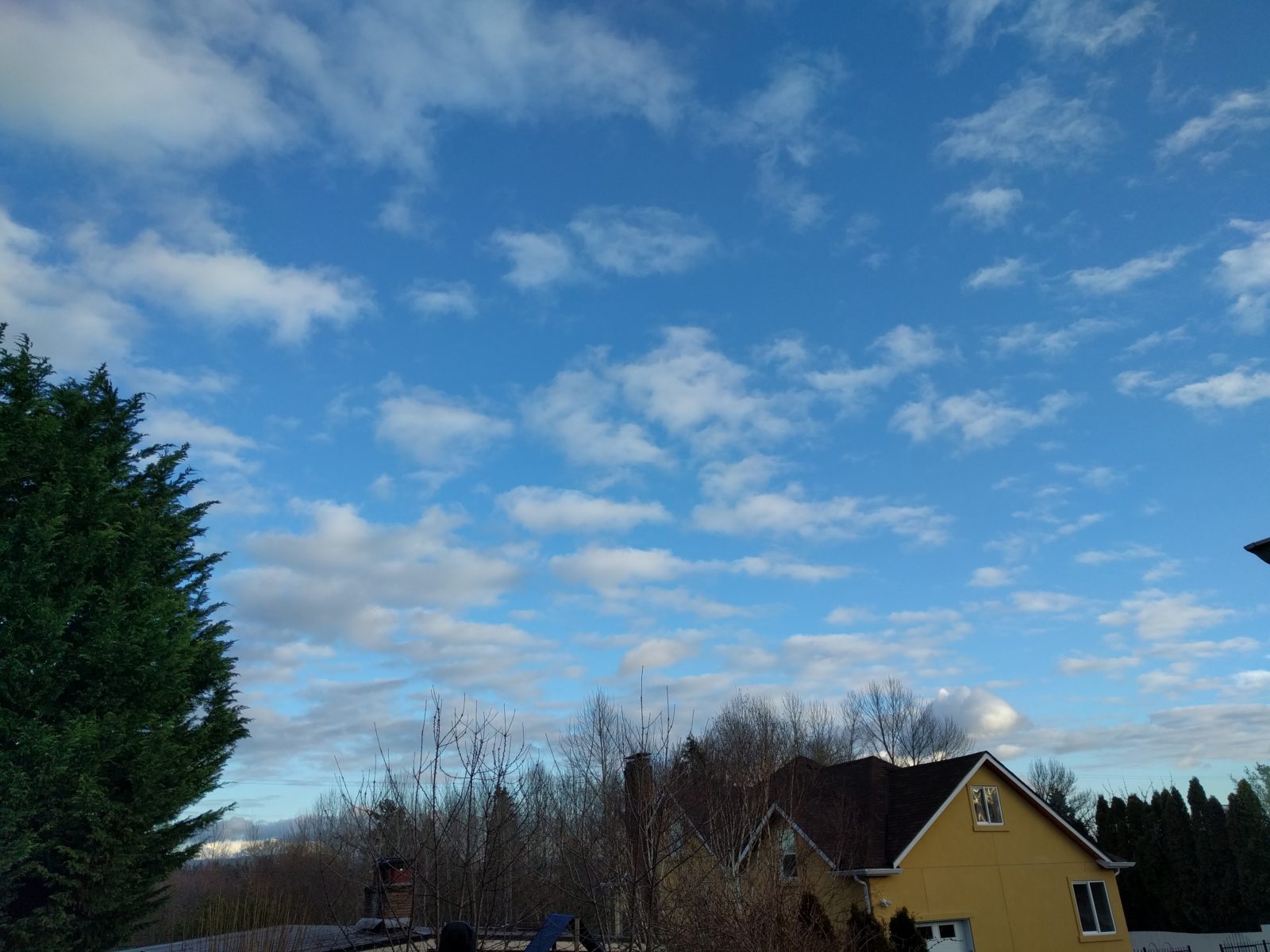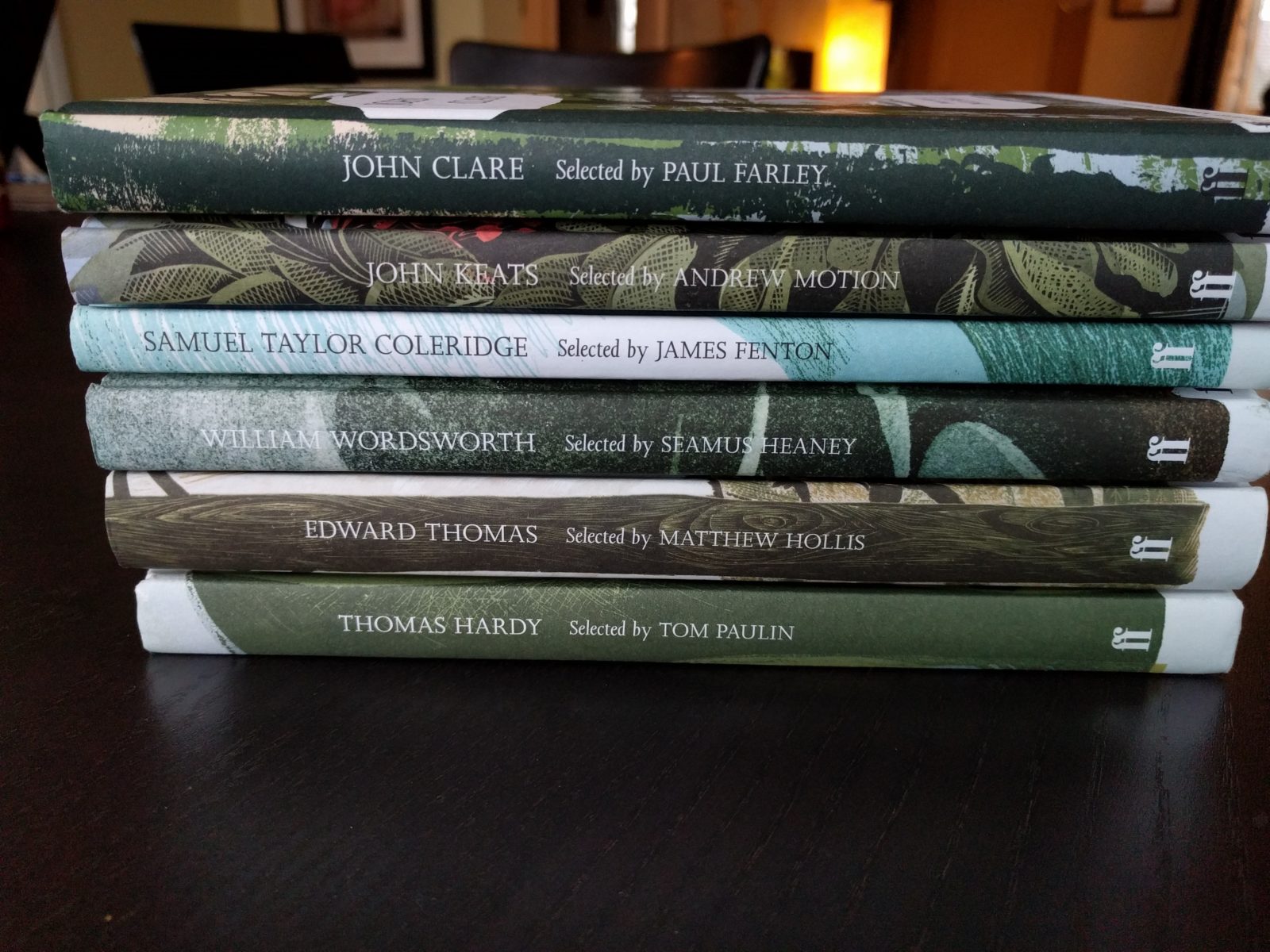In 2016 I’m doing a 365 Nature project. Each day of the year I will post something here about nature. It may be any format, a photo, video, audio, sketch or entry from my nature journal. It could be a written piece. Each day I will connect to nature in some way and share it here by the end of that day. You can keep up-to-date by subscribing to the RSS feed or be notified by email. See all the 365 Nature posts.
This morning when I dropped my daughter off at her school in the forest grove, I noticed a feather as I was leaving. I picked it up, because I can’t possibly pass by a feather without examining it, and saw it was different from any other feather I’d encountered. It was mostly black, with a small patch of white near the base. But what I noticed most was the orange color in two places along the right side. I took a photo and left the feather with the teacher to share. As a class rule, things found in the forest grove, stay in the forest grove. When I got home I consulted the Feather Atlas, an excellent resource from the U.S. Fish & Wildlife Service’s Forensics Laboratory. It’s not fully comprehensive, but it’s rare I don’t find the feather I’m searching for. I recently used it to identify what type of bird our Cooper’s Hawk caught in our front yard. After it left I collected all the feathers and brought them inside. It was a Pine Siskin.
This time it didn’t take long to discover the feather I’d found came from a Varied Thrush, a common woodland bird found here in the Pacific Northwest. I should have guessed, I regularly see the thrushes around the forest grove. Next to the classroom is the ash meadow and I suspect the thrushes forage for the berries produced by the ash trees. Varied Thrushes are a bit mysterious to me, they’re very shy and it’s rare I get a long look at one. It’s always a treat when I find one in our yard, but more commonly I see them during walks around the arboretum.
In stark contrast to the Golden-crowned Kinglet who foraged around me earlier this week, the thrushes fly up off the ground before I get anywhere near them. They’ll watch me from perches in the trees briefly before flying off. It’s not easy to get close to a thrush and because of this I’ve never managed to get a good shot of one. Finding their feather was a nice way to get a little closer to them.
View images of Varied Thrush feathers at the Feather Atlas:
Varied Thrush Primary Wing Feathers
Varied Thrush Secondary Wing Feathers






